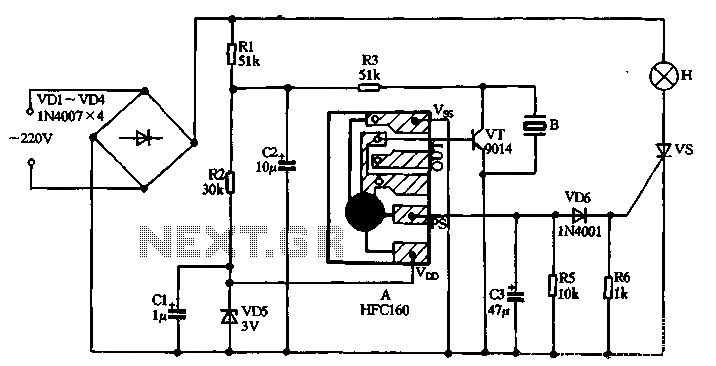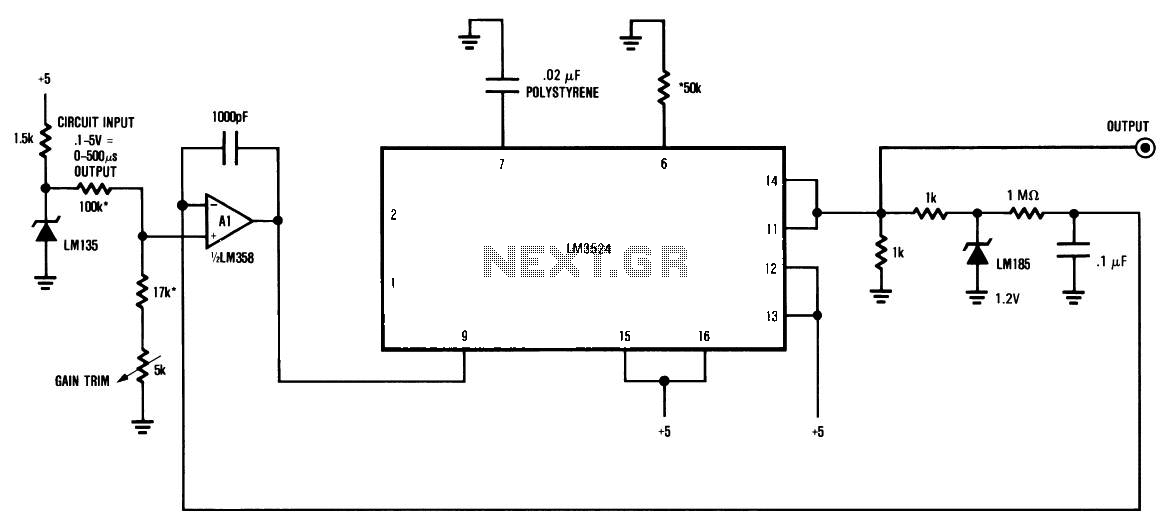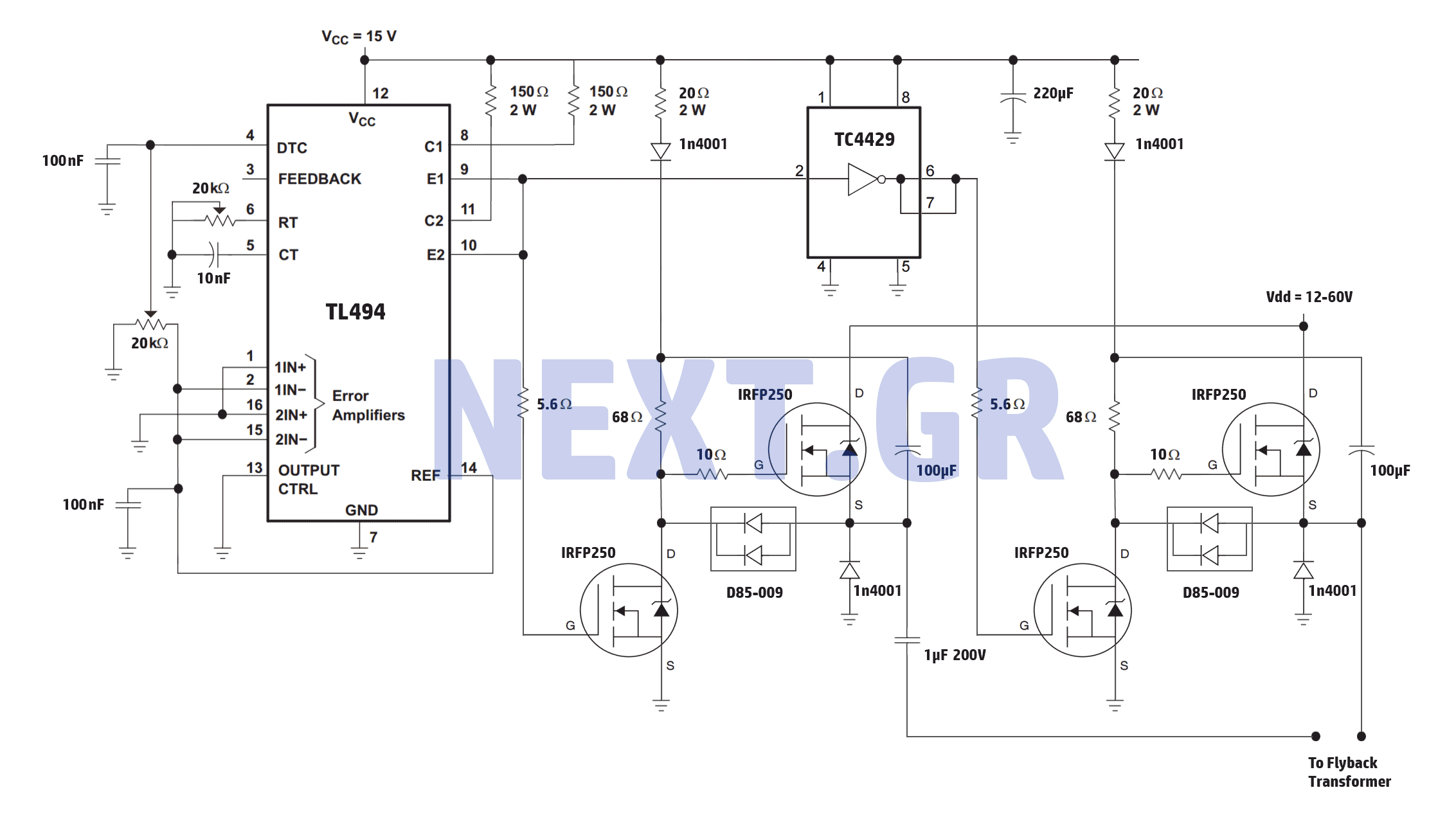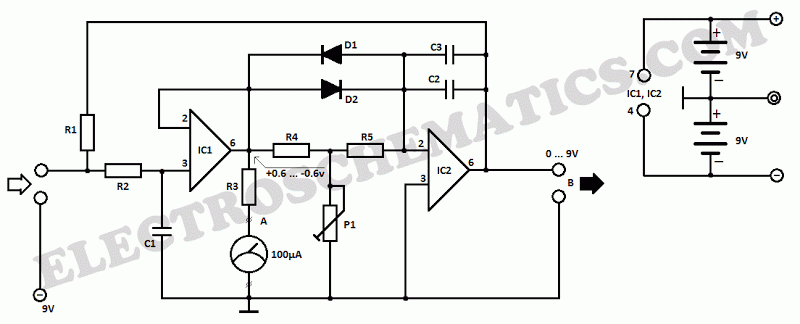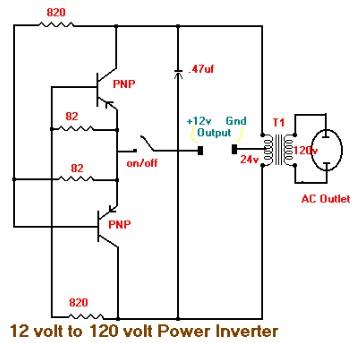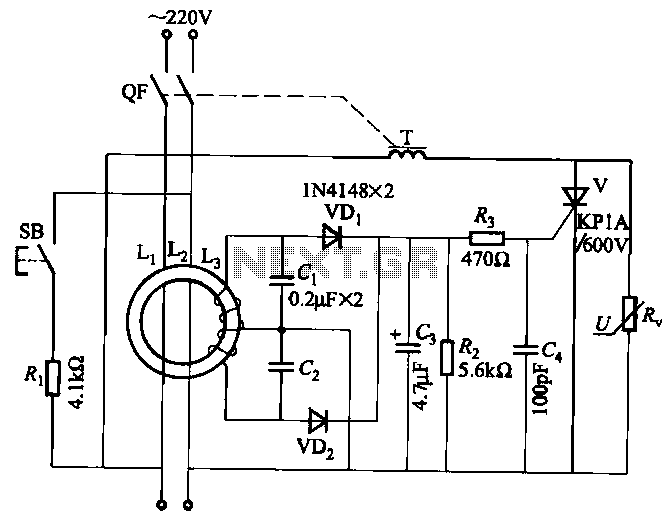
200mA per Hour 12V NiCAD Battery Charger circuit
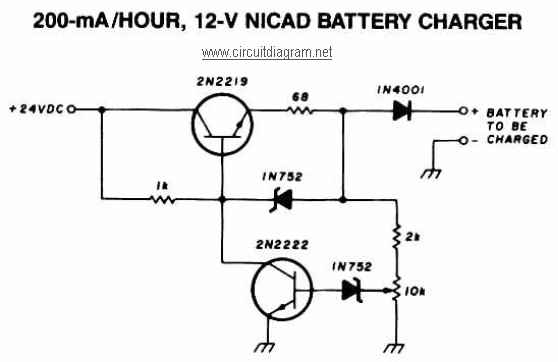
A 12V NiCAD battery charger circuit with a charging rate of 200mA per hour. This circuit initially charges the battery at 75mA until it reaches a full charge, after which the current is reduced to a trickle rate. The circuit can fully recharge a completely depleted battery in approximately four hours. It features current and voltage limiting mechanisms to extend the battery's lifespan. During the charging process, an indicator lamp (L1) will illuminate brightly while the LED will be off when the battery is low and charging is in progress. Conversely, the LED will shine brightly once the battery is fully charged. This circuit is designed to prevent overcharging, which can lead to electrolyte evaporation. It monitors the battery's charge condition through a feedback control system. Additionally, there is a circuit diagram available for a lead-acid battery charger, which provides an initial voltage of 2.5V per cell at 25°C to expedite charging. The charging current gradually decreases as the battery charges, and when it drops to 180mA, the charging circuit reduces the output voltage accordingly. This battery charger circuit is regulated and adjustable, making it suitable for charging various NiCAD batteries, whether in single-cell or multi-cell configurations connected in series or parallel. The maximum voltage for the batteries should not exceed 18V. Power transistors Q1 and Q2 are utilized as series regulators. There is also a schematic diagram for a solar-powered mobile phone battery charger, designed to charge from a lower voltage source. Caution is advised against using this circuit to charge batteries with a voltage equal to or lower than that generated by the solar panel.
The 12V NiCAD battery charger circuit is designed to provide a reliable and efficient charging solution for NiCAD batteries. The circuit operates by initially supplying a charging current of 75mA, which is optimal for the safe and effective charging of NiCAD cells. The transition to a trickle charge once the battery is fully charged is critical for maintaining battery health, as it prevents overcharging and reduces the risk of damage to the cells.
The inclusion of current and voltage limiting features is paramount in ensuring the longevity of the battery. These mechanisms help to prevent excessive current flow that can lead to overheating and electrolyte loss. The feedback control system continuously monitors the battery's state of charge, allowing for real-time adjustments to the charging parameters.
Indicator components, such as the lamp (L1) and LED, serve as visual cues to the user regarding the charging status of the battery. The bright illumination of the lamp during charging indicates that the battery is in the process of being charged, while the LED's behavior provides additional feedback on the battery's charge state.
For applications involving lead-acid batteries, the circuit provides an initial charging voltage of 2.5V per cell, which is essential for rapid charging. The gradual decrease in charging current as the battery approaches full charge ensures that the cells are not subjected to stress, further enhancing their lifespan.
The adjustable nature of this charger allows it to accommodate various configurations of NiCAD batteries, whether they are arranged in series or parallel. The maximum voltage rating of 18V ensures compatibility with standard battery configurations while preventing damage due to overvoltage.
Power transistors Q1 and Q2, used as series regulators, play a crucial role in maintaining stable output voltage and current levels, ensuring that the batteries are charged efficiently without exceeding safe operational limits. The design is versatile and can be adapted for solar-powered applications, emphasizing the importance of proper voltage management when integrating with solar panels. Overall, this circuit represents a comprehensive solution for charging NiCAD batteries while prioritizing safety and efficiency.200mA per Hour 12V NiCAD Battery Charger circuit. This NiCAD battery charger circuit charges the battery at 75 mA until the battery is charged, then it reduces the current to a trickle rate. The following diagram is the schematic diagram of 12V NiCAD battery charger with charging rate of 200mA/Hour.
This NiCAD battery charger circuit charges t he battery at 75 mA until the battery is charged, then it reduces the current to a trickle rate. It will fully recharge a dead/unpowered battery in 4 hours and the battery. The following diagram is the schematic diagram of Ni-CAD Battery Charger circuit which featured with current and voltage limiting to keep the battery lifetime. The lamp L1 will be light brightly and the LED will be out when the battery is low and battery charging in progress, but the LED is very bright and the.
Here is a simple and easy to build circuit diagram of a 12V car battery charger: The above circuit claimed have ability to prevent battery overcharge that make electrolyte lost due to evaporation. This circuit will eliminate the problems by monitoring the battery`s condition of charge through its retroactive control circuit by applying a high.
The following diagram is the circuit diagram of Lead-Acid battery charger. This circuit provides an initial voltage of 2. 5 V per cell at 25 ƒ to quickly charge the battery. The charging current decreases as the battery is charging, and when the current drops to 180 mA, the charging circuit reduces the output voltage of. This battery charger circuit is regulated and adjustable to make this circuit able to charge the mosto NiCAD battery.
This circuit will work for single cell or multi battery cell which connected with series/parallel connection. The maximum voltage of the batteries should be 18V maximum. Power transistors Q1 and Q2 are connected as series regulators. This is the schematic diagram of solar powered mobile phone battery charger. The circuit is designed to charge the battery from a source with a lower voltage. Do not use it to charge the battery with the same or lower voltage than the voltage which is generated by the solar panel.
For proper operation of. 🔗 External reference
The 12V NiCAD battery charger circuit is designed to provide a reliable and efficient charging solution for NiCAD batteries. The circuit operates by initially supplying a charging current of 75mA, which is optimal for the safe and effective charging of NiCAD cells. The transition to a trickle charge once the battery is fully charged is critical for maintaining battery health, as it prevents overcharging and reduces the risk of damage to the cells.
The inclusion of current and voltage limiting features is paramount in ensuring the longevity of the battery. These mechanisms help to prevent excessive current flow that can lead to overheating and electrolyte loss. The feedback control system continuously monitors the battery's state of charge, allowing for real-time adjustments to the charging parameters.
Indicator components, such as the lamp (L1) and LED, serve as visual cues to the user regarding the charging status of the battery. The bright illumination of the lamp during charging indicates that the battery is in the process of being charged, while the LED's behavior provides additional feedback on the battery's charge state.
For applications involving lead-acid batteries, the circuit provides an initial charging voltage of 2.5V per cell, which is essential for rapid charging. The gradual decrease in charging current as the battery approaches full charge ensures that the cells are not subjected to stress, further enhancing their lifespan.
The adjustable nature of this charger allows it to accommodate various configurations of NiCAD batteries, whether they are arranged in series or parallel. The maximum voltage rating of 18V ensures compatibility with standard battery configurations while preventing damage due to overvoltage.
Power transistors Q1 and Q2, used as series regulators, play a crucial role in maintaining stable output voltage and current levels, ensuring that the batteries are charged efficiently without exceeding safe operational limits. The design is versatile and can be adapted for solar-powered applications, emphasizing the importance of proper voltage management when integrating with solar panels. Overall, this circuit represents a comprehensive solution for charging NiCAD batteries while prioritizing safety and efficiency.200mA per Hour 12V NiCAD Battery Charger circuit. This NiCAD battery charger circuit charges the battery at 75 mA until the battery is charged, then it reduces the current to a trickle rate. The following diagram is the schematic diagram of 12V NiCAD battery charger with charging rate of 200mA/Hour.
This NiCAD battery charger circuit charges t he battery at 75 mA until the battery is charged, then it reduces the current to a trickle rate. It will fully recharge a dead/unpowered battery in 4 hours and the battery. The following diagram is the schematic diagram of Ni-CAD Battery Charger circuit which featured with current and voltage limiting to keep the battery lifetime. The lamp L1 will be light brightly and the LED will be out when the battery is low and battery charging in progress, but the LED is very bright and the.
Here is a simple and easy to build circuit diagram of a 12V car battery charger: The above circuit claimed have ability to prevent battery overcharge that make electrolyte lost due to evaporation. This circuit will eliminate the problems by monitoring the battery`s condition of charge through its retroactive control circuit by applying a high.
The following diagram is the circuit diagram of Lead-Acid battery charger. This circuit provides an initial voltage of 2. 5 V per cell at 25 ƒ to quickly charge the battery. The charging current decreases as the battery is charging, and when the current drops to 180 mA, the charging circuit reduces the output voltage of. This battery charger circuit is regulated and adjustable to make this circuit able to charge the mosto NiCAD battery.
This circuit will work for single cell or multi battery cell which connected with series/parallel connection. The maximum voltage of the batteries should be 18V maximum. Power transistors Q1 and Q2 are connected as series regulators. This is the schematic diagram of solar powered mobile phone battery charger. The circuit is designed to charge the battery from a source with a lower voltage. Do not use it to charge the battery with the same or lower voltage than the voltage which is generated by the solar panel.
For proper operation of. 🔗 External reference
